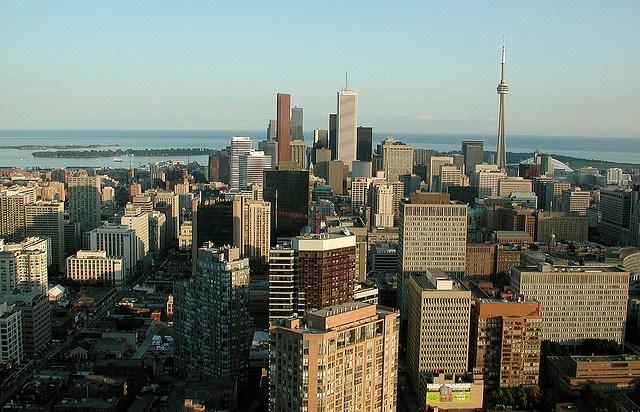
Parts of the U.S. are experiencing drought, including California. Other parts are experiencing floods, while others are also experiencing extreme weather events. How resilient are the world’s 50 most important cities? That’s what Grosvenor, a U.K. development and management group, wanted to find out.
The findings have been published in a recently released report, which ranks cities based on their vulnerability and adaptability. There are five categories for both vulnerability (climate, environment, resources, infrastructure and community) and adaptability (governance, institutions, technical capacity, planning systems and funding structures).
The most resilient cities are in Canada, with Toronto, Vancouver and Calgary in the top three spots. “Canadian cities have a strong combination of low vulnerability and high adaptive capacity,” the report states. Canadian cities also have a “high level of resource availability,” plus they are “well governed and well planned.” Although American cities are more vulnerable than Canadian cities, they have a capacity to adapt, which puts five (Chicago, Pittsburgh, Boston, Washington, D.C. and Atlanta) in the top 10 of most resilient cities. The report points out that the strong adaptive capacity “suggests that U.S. cities will continue to see a pattern of effective public intervention, but often only after a major shock has occurred.”
Part of the report is a set of case studies that examine particular cities. One of these is for Vancouver, which ranked number two among most resilient cities. When it comes to vulnerability, the city ranks in the top five in each category except climate vulnerability, where it is in the bottom 10. The city is in a low-lying coastal location, making it vulnerable to sea level rise. However, British Columbia’s Ministry of Environment has undertaken research into sea level rise predictions for planning purposes. Vancouver has the “Greenest City 2020 Action Plan,” which has 10 goal areas around carbon, waste and ecosystems -- with the ultimate goal of making Vancouver the greenest city in the world.
American cities dominate the top 10 'most adaptive' list, with New York making the top spot. Seven other American cities make the list (Los Angeles, Washington, D.C., Chicago, San Francisco, Houston, Boston and Pittsburgh). Although New York has a number of long-term issues to face, including the increased severity of heat waves and extreme winter weather, the city has a plan called PlaNYC 2030 that addresses some of these challenges. The plan covers a number of areas, including energy, housing, investment in green infrastructure and economic opportunity. The PlaNYC was released in 2007, and within a year of its launch 97 percent of its 127 initiatives had already begun.
The lowest ranked cities have the highest population forecast figures, and the 20 lowest ranked cities are in emerging markets. Their vulnerability is due to inequality, poor infrastructure provision, environmental degradation and climate vulnerability, according to the report. The cities are also weak in all areas of adaptive capacity. The lack of democracy in some of the cities is a “long-term hindrance,” according to the report.
Mexico City is one of the lowest ranked cities, making the 44th spot. A case study points out that Mexico City is weak in terms of community vulnerability and infrastructure vulnerability. The city also faces “significant risk” from earthquakes. However, there is some good news. Mexico City launched “Plan Verde” in 2007 which covers seven areas: land conservation, housing and public spaces, water supply and sanitation, transportation and mobility, air pollution, waste management and recycling, and climate. Progress has also been made in significantly reducing greenhouse gas emissions from vehicles.
Stockholm and Zurich were the only two European cities to appear in the top 10. But most major cities in Europe fall into the middle group of cities, ranked 11 to 30, which "should be considered resilient," according to the report. In Asia, Tokyo and Osaka, Japan, as well as Singapore, Hong Kong and Taipei appeared in this middle group, as did Buenos Aires in South America.
Check out the report from Grosvenor to see the whole list.
Image credit: Flickr/Small

Gina-Marie is a freelance writer and journalist armed with a degree in journalism, and a passion for social justice, including the environment and sustainability. She writes for various websites, and has made the 75+ Environmentalists to Follow list by Mashable.com.














